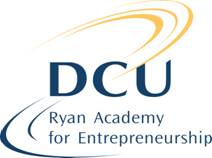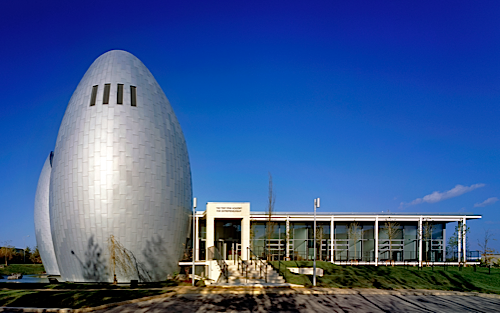Generally speaking, venture capital firms won’t sign non-disclosure agreements – and that’s usually not a problem. When they do reveal secrets, word gets out. That doesn’t mean you should go in unprotected, says attorney Martin Nichols in this Entrepreneur Thought Leader Lecture, given at Stanford University. Tools like provisional patents can help, but if at all possible, a firm patent is your best defense. It’s also wise to give VCs a peek at what you’re doing, but not necessarily a full, extensive look.
innovation DAILY
Here we highlight selected innovation related articles from around the world on a daily basis. These articles related to innovation and funding for innovative companies, and best practices for innovation based economic development.
Peter Thiel’s Thoughts On Tech Entrepreneurship

Tonight I went to go see Peter Thiel speak at Stanford University. He co-founded Paypal, was an early investor in a bunch of companies (Facebook, LinkedIn, etc), and is a billionaire.
I jotted down some notes from the talk which I thought were interesting.
- Intensive vs. Extensive - He spent a bunch of time comparing these two types of innovation. Intensive is building something new and truly innovative. An example would be the Macintosh or Paypal – both blazed a trail to create something that had never been created before. It’s carries a higher risk of failure but also greater rewards. Extensive is building on ideas which are already in place. It can be a safer way to build a company, but not as lucrative. An example would be putting accounting software online. Or doing another social network.
- China - He compared China and the U.S. saying that China’s next 20 years of growth are clearly extensive. They can simply copy the model which is the U.S. and grow rapidly (build this many airports, this many steel mills, etc). The U.S. can’t afford to do that and has the much harder job of pursuing intensive growth. We can’t just make more doctors, lawyers, bankers, and houses. To grow we need to build stuff the world has never seen (technology).
Can the Humanities Save Ireland?
 As Ireland faces up to its economic failings after a $111 billion European Union bailout was finalized this week, it must gather strength from its literary and artistic tradition to pull itself back from the brink, academics have argued.
As Ireland faces up to its economic failings after a $111 billion European Union bailout was finalized this week, it must gather strength from its literary and artistic tradition to pull itself back from the brink, academics have argued.
The Irish government was forced to accept the EU bailout in an attempt to keep its sinking economy afloat. It also proposed a four-year austerity plan that would see the loss of as many as 25,000 public sector jobs, the implementation of pay cuts for new staff and a hike in a key tax. The measures mark a nadir for the nation once dubbed the "Celtic Tiger" because of its rapid economic growth in the decade before the global recession hit.
3 Ways Of Looking At Government Debt
It’s getting very expensive for European countries to borrow money — not just Greece and Ireland, but, also Spain, Portugal, and Italy. The U.S., on the other hand, can still borrow money incredibly cheaply. Here are the figures from today:

Jess Jiang/NPR
This, at the moment, may be the most important distinction between the debt picture in the U.S. and Europe. It means that the U.S. can continue to finance its deficit spending relatively cheaply, while European countries are forced to spend more and more just to pay the interest on their debt.
frog design: FailForward – Why Successful Innovators Have to Learn How to Fail
 It is common knowledge that most new products and services fail when brought to market. Charles Kettering, Board Member of GM (1920-1947) famously noted that when it comes to innovation: “You don’t know when you are going to get the thing, whether it’s going to work or not and whether it’s going to have any value whatsoever.” And even as things may have improved a bit since Kettering’s time, thanks to today’s attention to innovation processes and user-centered development practices, there’s still uncertainty that haunts all innovation attempts.
It is common knowledge that most new products and services fail when brought to market. Charles Kettering, Board Member of GM (1920-1947) famously noted that when it comes to innovation: “You don’t know when you are going to get the thing, whether it’s going to work or not and whether it’s going to have any value whatsoever.” And even as things may have improved a bit since Kettering’s time, thanks to today’s attention to innovation processes and user-centered development practices, there’s still uncertainty that haunts all innovation attempts.
Runner Crawls to Finish to Win Title for Her Ailing Coach

SAN FRANCISCO — A top runner who hits the wall. A coach with a cruel illness. A state championship at stake.
Such was the situation last Saturday when Holland Reynolds, a star runner from a small private high school in San Francisco, collapsed at the state cross-country meet and crawled across the finish line to clinch the championship for her team.
Reynolds, 16, a junior, has been a distance runner since she was in third grade. She arrived at San Francisco University High School as a fast freshman in 2008, ended her first season as the team’s top runner and has been the lead runner for the cross-country team ever since.
Her coach, Jim Tracy, 60, arrived at University High School in 1994 and built both the girls’ and boys’ teams into perennial state champions.
Finland Creative Economy and Culture in the Innovation Policy
 The creative economy and culture have emerged as an important element in regional competitiveness and innovation activities. This is obvious in the European Union's strategies and programmes, as well as Finland’s national strategies.
The creative economy and culture have emerged as an important element in regional competitiveness and innovation activities. This is obvious in the European Union's strategies and programmes, as well as Finland’s national strategies.
Through this publication, the Finnish Ministry of Education and Cultural Theme Group aim to provide new perspectives to those working in the creative economy, especially regional developers.
See the Future with a Search
 A startup called Recorded Future has developed a tool that scrapes real-time data from the Internet to find hints of what will happen in the future. The company's search tool spits out results on a timeline that stretches into the future as well as the past.
A startup called Recorded Future has developed a tool that scrapes real-time data from the Internet to find hints of what will happen in the future. The company's search tool spits out results on a timeline that stretches into the future as well as the past.
The 18-month-old company gained attention earlier this year after receiving money from the venture capital arms of both Google and the CIA. Now the company has offered a glimpse of how its technology works.
Conventional search engines like Google use links to rank and connect different Web pages. Recorded Future's software goes a level deeper by analyzing the content of pages to track the "invisible" connections between people, places, and events described online.
Teenage great white sharks are awkward biters
 The jaws of adolescent great white sharks may be too weak to capture and kill large marine mammals, according to a new study published in the Journal of Biomechanics by an international team of scientists.
The jaws of adolescent great white sharks may be too weak to capture and kill large marine mammals, according to a new study published in the Journal of Biomechanics by an international team of scientists.
The researchers also found that, unlike mammals, sharks can maintain high bite forces no matter how widely their jaws are open, thanks to a unique jaw muscle arrangement that has helped them to be among the most successful predators of all time.
The study is the first of its kind to use sophisticated three-dimensional computer models and advanced engineering techniques to examine how different sharks hunt and kill prey.
Don’t Believe the Hype – Ireland Still Open for Business with New Accelerator Programme
 Ryan Academy for Entrepreneurship Propeller to Support 24 Start-ups and Raise Additional 2 million. The ‘Propeller’ programme for startups to be launched on Monday 22nd by EU Commissioner in DCU.
Ryan Academy for Entrepreneurship Propeller to Support 24 Start-ups and Raise Additional 2 million. The ‘Propeller’ programme for startups to be launched on Monday 22nd by EU Commissioner in DCU.
Dublin City University’s Ryan Academy for Entrepreneurship in Dublin has outlined details of its seed venture fund for early stage technology startup companies. The seed accelerator fund will be titled Propeller and aims to fund and incubate up to twenty-four early stage technology companies over the next two years. Over twenty startup companies have already been in discussions with the Academy since the fund and programme was announced in July. To date 1 million has been raised from Declan Ryan (Ryanair etc) and it is planned to raise an additional 2 million in the coming years to further develop the programme.
The programme includes:
- €30,000 per company funding
- 8-10 companies funded in first round
- Online application now open
- Follows similar programmes in other countries with mentor-led support from both serial entrepreneurs in Ireland and senior management in the many corporates that are based in Dublin
- Package of free services in marketing, sales, legal, IP and accounting with corporate partners
- Application process ends in mid January, programme starts on 1st February until end of April. Investor day held on 1st May.
Details here: http://www.dcu.ie/ryanacademy/

Consolidation In Canadian Venture Capital As Covington Swallows VenGrowth
 While you were feasting on turkey and trimmings, Canadian venture capitalists were hard at work.
While you were feasting on turkey and trimmings, Canadian venture capitalists were hard at work.
Covington Fund II Inc. said Thursday it won approval to combine with five VenGrowth Asset Management funds. It offered no financial terms for the transaction, though VenGrowth assets are roughly $320 million. According to Covington, the deal will produce one of Canada’s largest venture capital funds with net assets of $425 million and 50 to 55 portfolio investments — a rival to perhaps the largest fund, GrowthWorks Ltd.
The deal sparked some controversy. GrowthWorks also sought the assets and had circulated a dissident proxy requesting the opportunity to present a better offer. Tim Lee, the firm’s senior VP of investments, said it continues to look into the shareholder votes held Thursday as it considers its next move.
The Great American Job Purge
 Current economic development trends are not promising for the United States. Federal efforts are very disappointing, as is true for far too many state governments. Our clients increasingly ask us the same question: "If we are to keep our operations in the U.S., what states have the most pro-business climates?" In response to this never-ceasing question, our company ranks all 50 states based on thirty factors, such as taxation, education, infrastructure, professionalism of the state economic development department, and state incentive programs. All 31 factors are controlled by state government.
Current economic development trends are not promising for the United States. Federal efforts are very disappointing, as is true for far too many state governments. Our clients increasingly ask us the same question: "If we are to keep our operations in the U.S., what states have the most pro-business climates?" In response to this never-ceasing question, our company ranks all 50 states based on thirty factors, such as taxation, education, infrastructure, professionalism of the state economic development department, and state incentive programs. All 31 factors are controlled by state government.
Over the years, I’ve seen efforts by enlightened state political leaders only to be disappointed by other states that reverse a prior governor’s or legislature’s advances. I have seen new governors come into office and, within a few months, decimate excellent state programs and economic development staffs. I saw this happen in a Midwestern state where my company had assisted in the location of many corporate facilities.
Ron Pollina, President and Founder, Pollina Corporate Real Estate
Learning and discovery are Nebraska’s ultimate competitive advantage, once the talent, companies and places find each other.
 Last year at this time, the State of Nebraska’s Department of Economic Development (DED) and Department of Labor were advertising for an outside contractor to conduct a competitive advantage assessment. At a cost of US$220,000, Battelle has since carried out that assessment, and issued its report in September.
Last year at this time, the State of Nebraska’s Department of Economic Development (DED) and Department of Labor were advertising for an outside contractor to conduct a competitive advantage assessment. At a cost of US$220,000, Battelle has since carried out that assessment, and issued its report in September.
Mitch Horowitz, vice president and managing director of the Battelle Technology Partnership Practice and primary authorof the report, says Nebraska has a “very robust” industry base and fared well during the last business cycle. It also has a solid pipeline of R&D activity, whether it be on corporate or academic campuses. The challenge lies in bridging those two strong fundamentals.
“Here’s an economy that’s really performing well, and obviously getting graduates from the University of Nebraska, Creighton, the community colleges and other schools,” he says. “But the really deep connections you see in more well developed tech economies aren’t as apparent. I think there are some great opportunities as they move forward to embrace that, but with the strong foundation of an industry base in place.”
Debunking the 3 biggest recruiting myths
 With the economy on the rebound, businesses are ready to hire – but as many businesses know, finding talented people that will take them to the next level can be an immense challenge. In today’s market, getting the golden candidate through the door takes a lot more than just posting a listing and praying they notice.
With the economy on the rebound, businesses are ready to hire – but as many businesses know, finding talented people that will take them to the next level can be an immense challenge. In today’s market, getting the golden candidate through the door takes a lot more than just posting a listing and praying they notice.
There are a significant handful of best practices around snagging the most appropriate new employee – and VentureBeat has covered those previously. However, there are also a few myths floating around that need to be quashed immediately.
Only HR recruits – Restricting recruiting to a specific department – or in some cases one person- can significantly limit the reach of your company’s job search capabilities. Even within a small start-up, each employee has a sizeable network that can quickly bring forth excellent talent. It really is as simple as the concept that good people know and trust other good people.
Social Media and B2B – LinkedIn
 In a previous blog, Social Media and B2B – Let’s Get Started, I listed the three key benefits of social media as:
In a previous blog, Social Media and B2B – Let’s Get Started, I listed the three key benefits of social media as:
- Brand
- Relationships
- Information
Today, I continue this series on Social Media and B2B and specifically discuss LinkedIn.
Why LinkedIn?
The benefits of LinkedIn are as follows:
-
Brand
- Increase visibility to build the brand
- Personalize and humanize your company and brand
- Increase visibility to build the brand
-
Relationships
- Facilitate relationships by knowing more about the people and companies you meet and do business with
- Enhance your credibility with key customers and stakeholders
- Gain referrals and access to people you don’t know and may want to know
- Facilitate relationships by knowing more about the people and companies you meet and do business with
Innovate By Hacking Capabilities
 Capabilities are the amino acids of innovation. They are the building blocks that enable value delivery. Innovation is a better way to deliver value and is often the result of repurposing existing capabilities. Locking capabilities into rigid organization structures and proprietary closed systems gets in the way of unleashing new sources of value and solving many of the important challenges of our time. Innovation is about hacking capabilities.
Capabilities are the amino acids of innovation. They are the building blocks that enable value delivery. Innovation is a better way to deliver value and is often the result of repurposing existing capabilities. Locking capabilities into rigid organization structures and proprietary closed systems gets in the way of unleashing new sources of value and solving many of the important challenges of our time. Innovation is about hacking capabilities.
A capability is simply the power to do something and is comprised of three elements, people, process, and technology. You might have the capability or power to make a mean western omelet. You possess the skill (people) thanks to hands-on training from mom, a recipe (process) handed down for generations, and a great cook top range, non-stick pan, and spatula (technology). Hacking the capability is easy. A Google search for western omelet recipes yields almost 25 thousand hits. That’s more variety than a lifetime of Sunday brunches. To stretch the analogy a western omelet capability can also be combined with other capabilities to open a cool restaurant, launch a cooking blog or cable television show, or to commercialize a new cooking utensil. Innovation happens when we enable random capability collisions resulting in new and unexpected ways to deliver value.
Winter 2011 Pepperdine Private Capital Markets Project Survey Report
 The Winter 2011 Pepperdine Private Capital Markets Project Survey Report is now ready for download! Because of your participation in this survey, you are being notified prior to general release. You can download the complimentary report here: Winter 2011 Report.
The Winter 2011 Pepperdine Private Capital Markets Project Survey Report is now ready for download! Because of your participation in this survey, you are being notified prior to general release. You can download the complimentary report here: Winter 2011 Report.
In this 160-page report, you'll find expected returns by capital providers (senior lenders, asset-based lenders, mezzanine funds, private equity groups, venture capital, angel investors, and factors), business owners' opinions of costs and benefits of various sources of private capital, intermediaries assessments of the deal making environment, business appraisers' estimates of various cost of capital components, current leverage and deal multiples, industry and economic outlooks, and much more!
Thank you for your support!
Israel's Asian challenge
 JERUSALEM, Israel -(AP) — It's well known that the emergence of India and China is casting a shadow on the developed economies of Europe and North America. Less famous is the challenge facing Israel: With the Jewish state having quietly prospered as a global haven of innovation, key players here are asking whether the Asian giants might steal their high-tech thunder.
JERUSALEM, Israel -(AP) — It's well known that the emergence of India and China is casting a shadow on the developed economies of Europe and North America. Less famous is the challenge facing Israel: With the Jewish state having quietly prospered as a global haven of innovation, key players here are asking whether the Asian giants might steal their high-tech thunder.
The laundry list of Israeli achievements is surprising for a country of just 7.6 million. The country helped give the world instant messaging, voicemail, and Internet telephony. Its nanotechnology has enabled great advances in medicine.
It boasts of more companies on the technology-focused Nasdaq exchange than any other place outside North America, and houses research and development centers for multinational giants like Microsoft and Intel.
How to Fulfill Your Second Half Career Dream
 About ten years ago I was having lunch with a long-time business friend. It was a sunny day in the Bay Area so we sat outside on the patio. I happen to think that el fresco dining - or working outside in general, for that matter - leads to inspired thinking, but that’s just me.
About ten years ago I was having lunch with a long-time business friend. It was a sunny day in the Bay Area so we sat outside on the patio. I happen to think that el fresco dining - or working outside in general, for that matter - leads to inspired thinking, but that’s just me.
Anyway, I somehow got to spilling some of my crazy ideas of what to do next. You know, what to do after getting fed up, fired, or otherwise burned out at the company I was with at the time. My friend just smiled and said, “Oh, you mean your second half plan.”
Is the U.S. Falling Behind in the Clean Energy Race?
 In the 1970s, refrigerators were growing in size—and energy consumption. In one of the more successful government-supported programs for energy-efficient technology, research and development of better compressors now have provided refrigerators that are larger still—but use roughly the same amount of energy as the smaller iceboxes of the past.
In the 1970s, refrigerators were growing in size—and energy consumption. In one of the more successful government-supported programs for energy-efficient technology, research and development of better compressors now have provided refrigerators that are larger still—but use roughly the same amount of energy as the smaller iceboxes of the past.
Similar examples of the federal government at work range from the creation of an industry for producing natural gas from coal seams to the ongoing Advanced Research Projects Agency–Energy (ARPA-E), a small-scale funding agency with outsized ambitions. As the U.S. faces what Secretary of Energy Steven Chu calls a "Sputnik moment" on energy—falling behind China and others in the race to develop clean energy technologies worth trillions of dollars—the question is: can the U.S. compete? And how?

